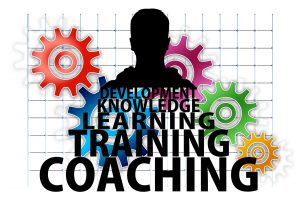179003291
The secondary section of compulsory schooling will run from 14-16 years old which is based on the current education system (Department for Education 2019). The current education system means that all children receive the chance to get qualifications. Being at school from 14-16 means they have to take the exams (Department for Education 2019) which is something they will be incorporating. This alternative system will standardise qualifications as everyone will be taking assessments with the same content. The secondary section allows for the student to be given two years to fully prepare for these assessments and gives them the best chance of succeeding. The secondary section will be more individualised than the current system as they will have the choice of assessment.
The secondary section of the alternative system will aim to be inclusive and democratic through giving students the choice of which assessment they would like to take. The choice of assessment means that the student has the chance to pick the assessment that incorporates their learning style. Learning styles are different for every student and this system aims to not exclude any of them (Pashler et al 2008). This means that instead of assessment being the same and excluding certain types of learning style it allows all children to pick the style which will help them succeed. Assessments will all be based on the same knowledge however the way the children choose to express that knowledge is down to them. Assessments such as presentations and creative artefacts allows children to show their knowledge in a way that suits them. This aims to create an inclusive learning environment.
Students are being taught democracy in the younger years and will then learn to exercise democracy from 14-16 years old. They will have the choice over assessment as previously mentioned and the students will also take part in a monthly vote. The students will vote on how certain resources will be used this allows them to express which parts of education system they feel is important (Neill 1967) whilst also learning how the voting system works and learning that democracy is not always fair. They will also vote on what will be learnt and when (from a predetermined list) and will negotiate with the teachers as to what is taught and how (Piaget 1985). This allows students to feel a part of a democratic community and also structure their own learning (Neill 1967).
In the secondary section there will be a focus on self-directed learning which is reflected in Knowles (1980) theory of andragogy. Children will self-direct their own learning and will pick what interests them which is a more individualised way of learning. Self-directed learning will be used to help students structure their learning and it will show them how to be in control of their own education (Knowles 1980). It will mean they develop the skills they need to make decisions in adult life.
There are different types of learning which is often linked to brain-based learning (pashler et al 2008). Different learning styles make education an individualised concept and this system aims to make all tasks accessible to all and wont label those who do not fit in to conventional learning styles underachievers (pashler et al 2008) There are multiple intelligences and this system aims to incorporate all types of intelligences to ensure that opportunities for all children to raise their attainment is equal (pashler et al 2008). As well as different learning styles there are also different thinking styles which means that children process information differently and this system will also aim to give every child the opportunity to think in a way that suits them (pashler et al 2008). Education in this system will be an individualised process and will make sure that all children have the best chance to succeed.
The secondary section of this alternative system aims to create an individualised learning environment that incorporates all styles and gives all children the equal chance to succeed. Learning will be self-directed and will give the democratic right to express what they wish to learn. The secondary section will take into account students’ opinions and thoughts whilst also making sure that they have the right skills to survive in the world as an autonomous and fully functioning human (Dultz 1999, p 48).
